Research Updates
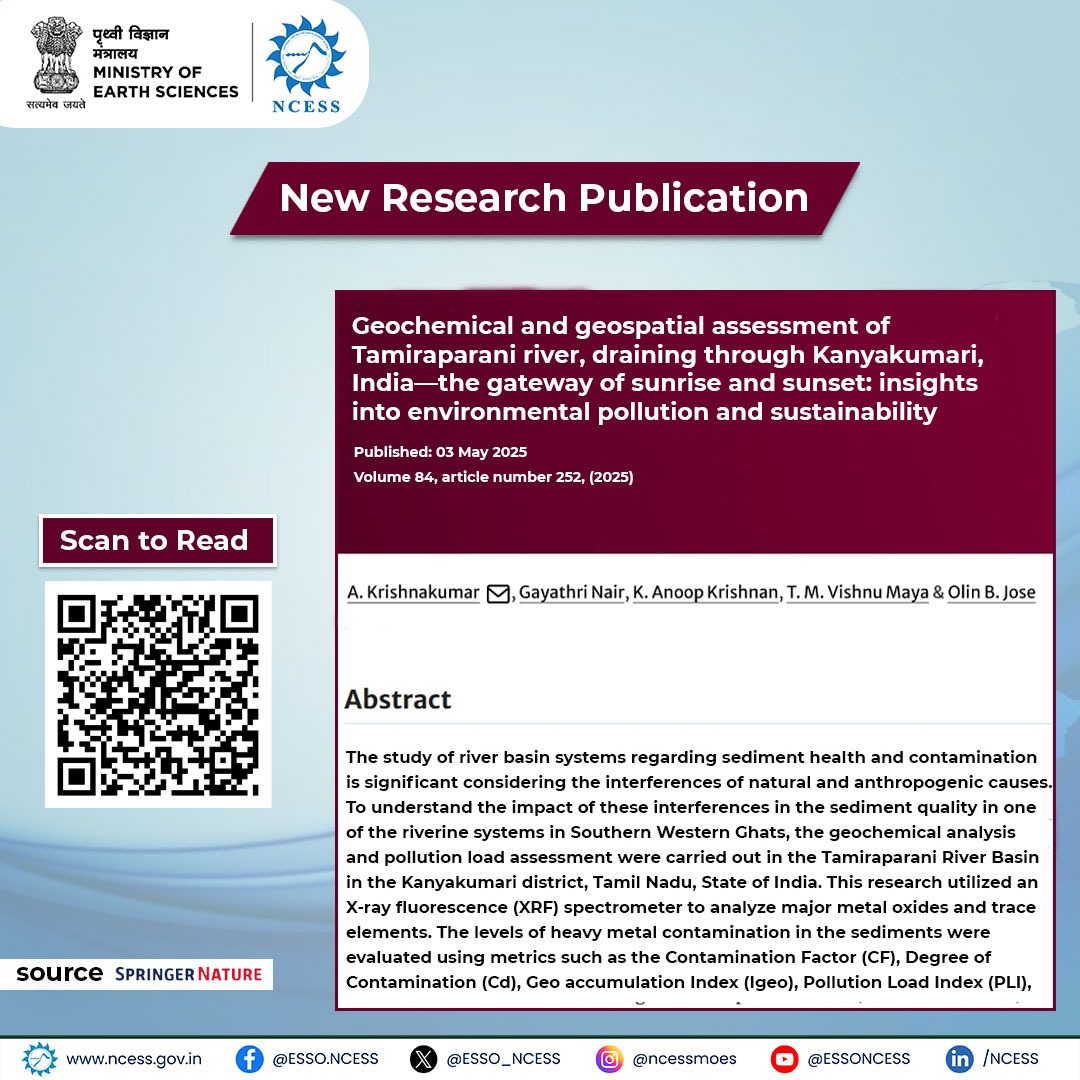
A captivating new study from the National Centre for Earth Science Studies (NCESS) dives into the sediment characteristics and trace metal pollution of the Tamiraparani River. This research draws a clear line between natural and human-induced pollution, uncovering noteworthy contamination levels of metals such as copper, chromium, and zinc that fluctuate depending on the area.
Bibliographic Info: A. Krishnakumar, Gayathri Nair, K. Anoop Krishnan, T. M. Vishnu Maya & Olin B. Jose (2025).
https://doi.org/10.1007/s12665-025-12265-6.
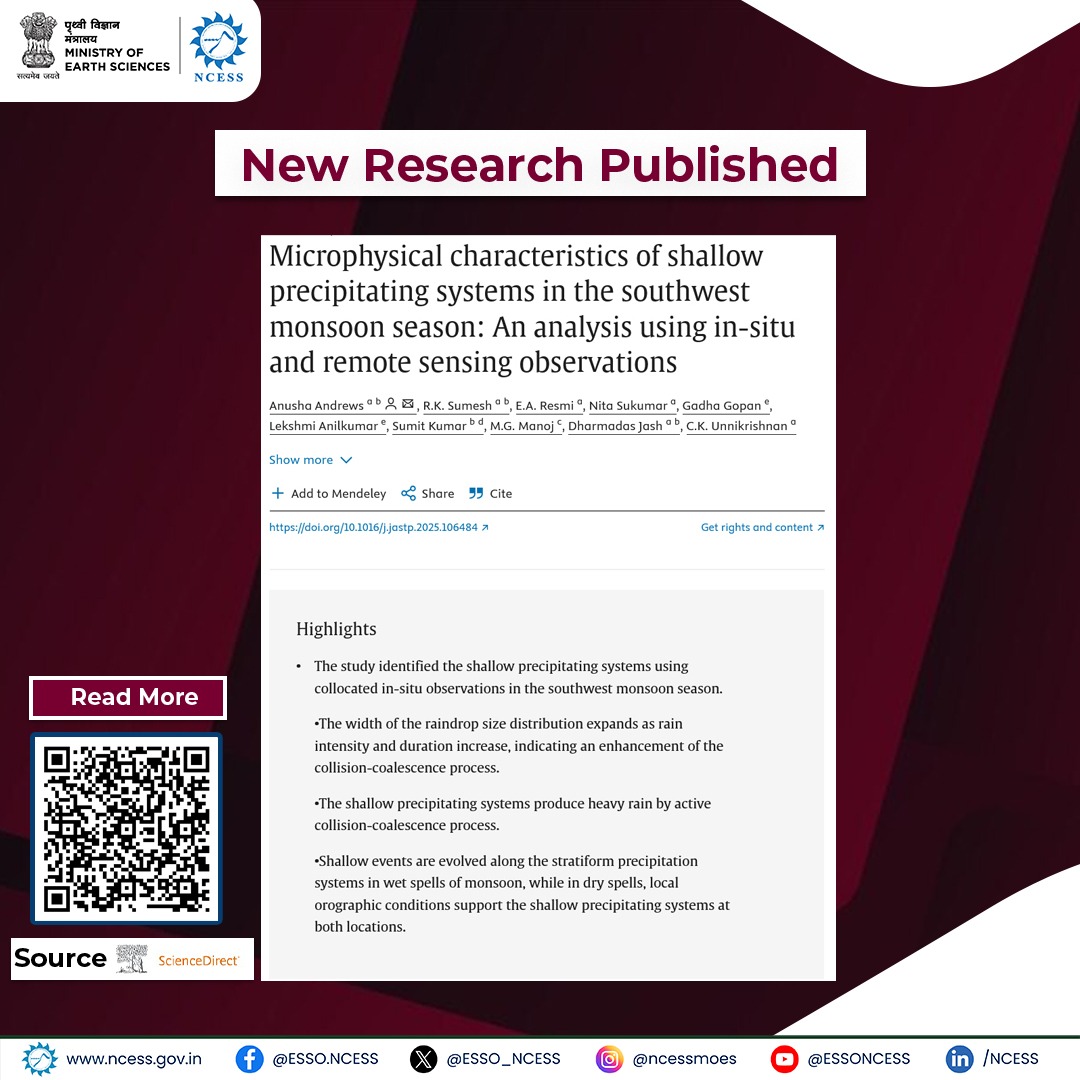
A new research by the National Centre for Earth Science Studies (NCESS) identified the shallow precipitating systems using collocated in-situ observations during the southwest monsoon season. The shallow precipitating systems produce heavy rain by the active collision-coalescence process. The collision-coalescence process is enhanced with the rain intensity and duration of shallow systems, as evidenced by the widening of the raindrop spectra.
Bibliographic Info: Anusha Andrews, R.K. Sumesh, E.A. Resmi , Nita Sukumar , Gadha Gopan , Lekshmi Anilkumar , Sumit Kumar , M.G. Manoj , Dharmadas Jash, C.K. Unnikrishnan . (2025).
https://doi.org/10.1016/j.jastp.2025.106484..
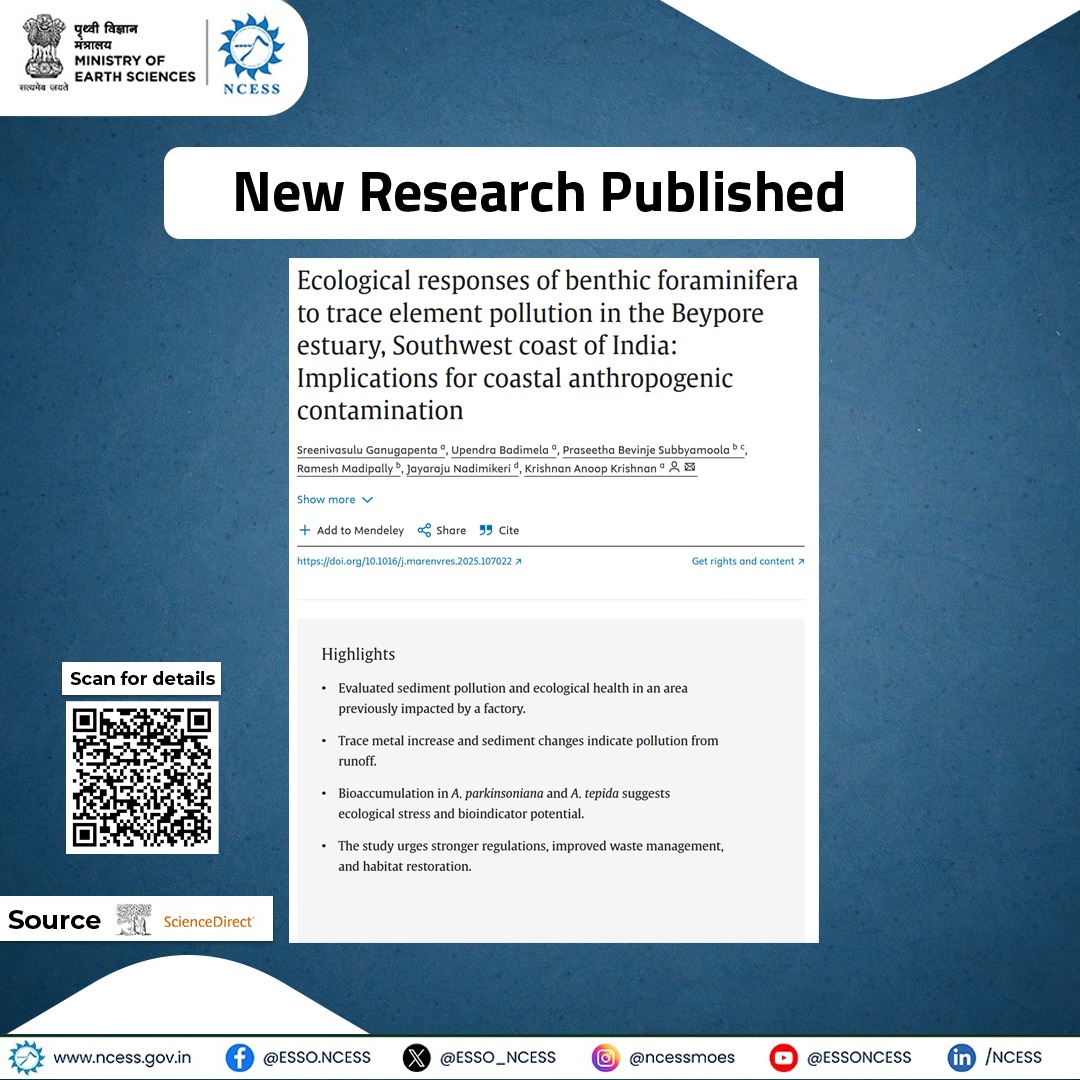
A new research by the National Centre for Earth Science Studies (NCESS) provides a comprehensive assessment of sediment characteristics, trace metal pollution, and the ecological health of the Beypore Estuary over nearly three decades (1989–2015). The findings emphasize the role of benthic foraminifera as bioindicators, offering crucial insights into coastal anthropogenic contamination.
Bibliographic Info: Sreenivasulu Ganugapenta,Upendra Badimela,Praseetha Bevinje Subbyamoola,Ramesh Madipally,Jayaraju Nadimikeri, Krishnan Anoop Krishnan . (2025).
https://doi.org/10.1016/j.quascirev.2025.109417.
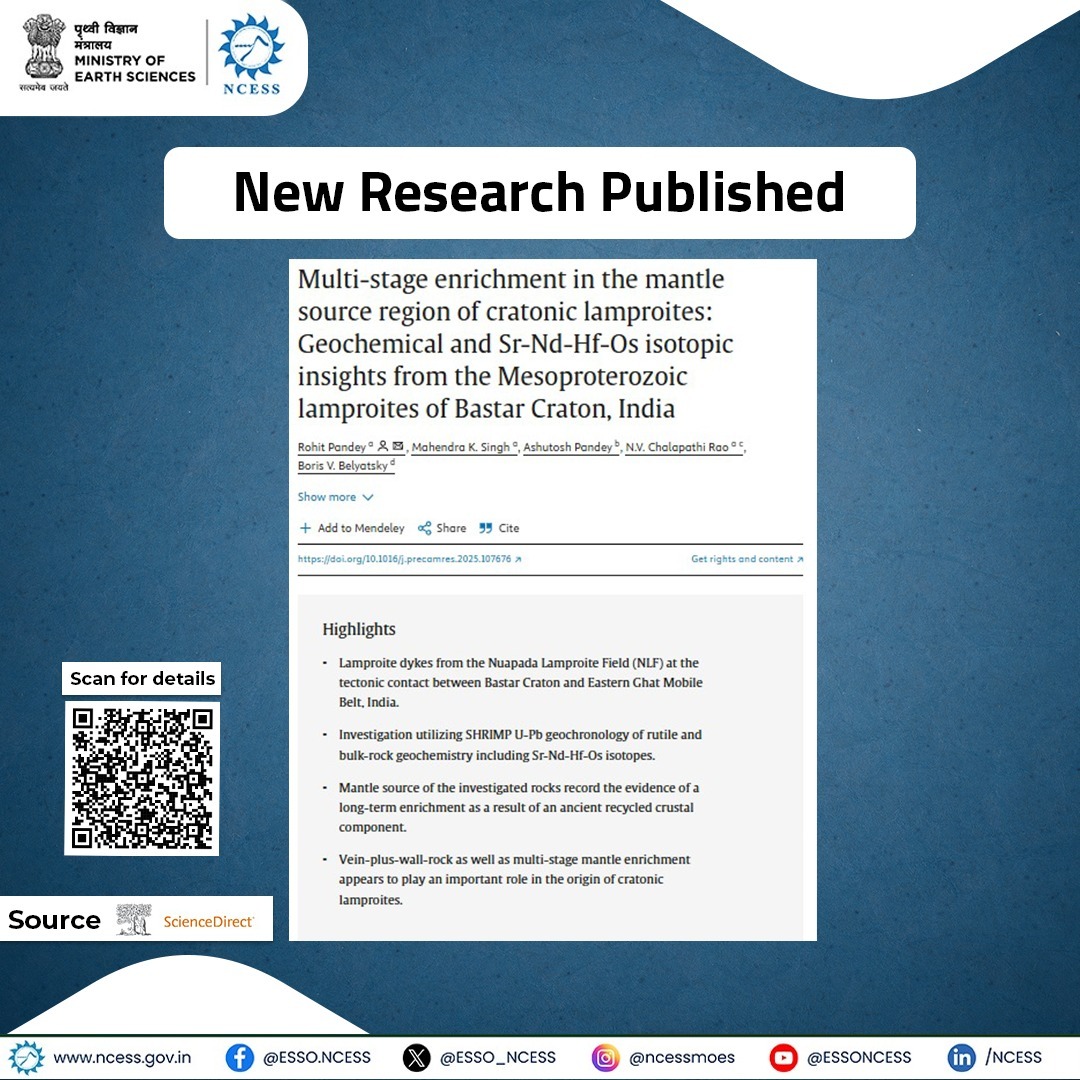
A new research by the National Centre for Earth Science Studies (NCESS) on ‘Multi-stage enrichment in the mantle source region of cratonic lamproites: Geochemical and Sr-Nd-Hf-Os isotopic insights from the Mesoproterozoic lamproites of Bastar Craton, India’, presents SHRIMP U-Pb geochronology of rutile and bulk-rock geochemistry.
Bibliographic Info: Rohit Pandey, Mahendra K. Singh, Ashutosh Pandey, N.V. Chalapathi Rao, Boris V. Belyatsky. (2025).
https://www.sciencedirect.com/science/article/pii/S0301926825000026.....
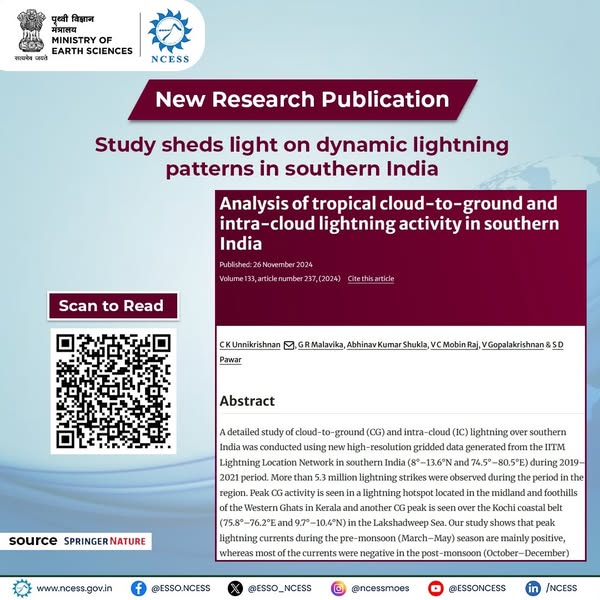
A new collaborative research by the National Centre for Earth Science Studies (NCESS) on tropical lightning in #SouthernIndia offers key insights into its patterns and causes. Researchers analysed 5.3 million #lightningstrikes recorded between 2019–2021 from a state of the art high resolution ground based lighting location network, with most occurring during pre-monsoon seasons. Dangerous high magnitude lightning currents were observed during post-monsoon seasons, while positive lightning strikes were common before the monsoon. #Lightning within clouds was found to be more active in deep convective clouds at high altitudes (10-18 km). The study also highlights how seasonal changes, aerosol concentrations and ocean temperatures influence spatial lightning activity across the region.
Bibliographic Info: C K Unnikrishnan, G R Malavika, Abhinav Kumar Shukla, V C Mobin Raj, V Gopalakrishnan, S D Pawar. (2024).
https://link.springer.com/article/10.1007/s12040-024-02420-1.




 RTI Act
RTI Act

